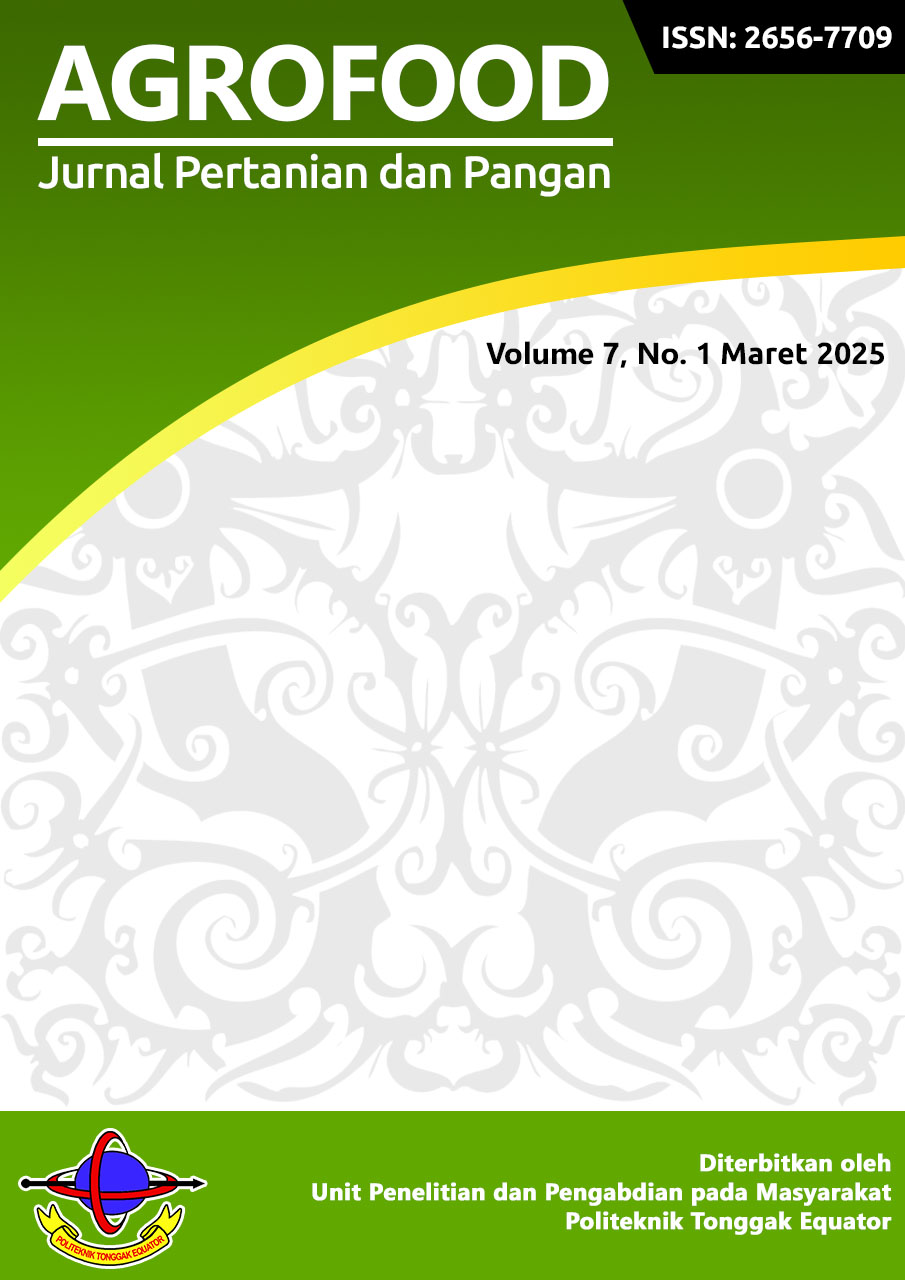PENANGANAN PANEN DAN PASCA PANEN PADI DI DESA PARIT KELADI KECAMATAN SUNGAI KAKAP KABUPATEN KUBU RAYA
DOI:
https://doi.org/10.63848/agf.v07n1.3Keywords:
paddy, harvest, post-harvest, descriptiveAbstract
Rice production declines can be attributed to a variety of factors, one of which includes improper post-harvest handling. Improper post-harvest handling of rice can increase yield losses and reduce quality. At each stage, improper post-harvest handling of rice increases losses while decreasing quality and shelf life. The goal of this research was to identify the implementation of rice harvesting and post-harvest technology in Parit Keladi Village, Sungai Kakap District, Kubu Raya Regency. This study applies a descriptive method that provides as clear a picture or description of a situation as possible without any manipulation of the object under study. (Koutur, 2004). The study found that post-harvest rice handling in Parit Keladi Village, Kubu Raya Regency, West Kalimantan, was semi-mechanical, with one supporting machine in the form of a power thresher. Rice farmers in Parit Keladi Village have used a variety of post-harvest handling processes to reduce post-harvest losses and maintain rice quality, including selecting certified rice seeds, collecting rice in plastic sacks, threshing rice in a power thresher, manual cleaning, packaging in plastic sacks, and stacking on pallets. Several post-harvest handling processes used by rice farmers in Parit Keladi Village continue to increase post-harvest losses of rice, including the use of traditional sickles. Some rice is still stored in semi-open areas that are not free of post-harvest pests like rodents and insects.






